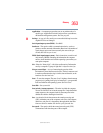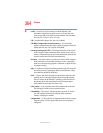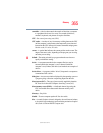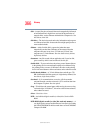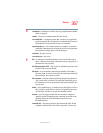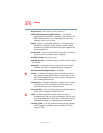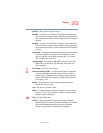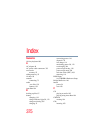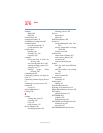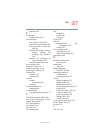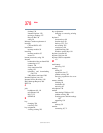
371
Glossary
5.375 x 8.375 ver 2.3
P
palette—See color palette.
parallel—Processes that occur simultaneously. In communications, it
means the transmission of more than one bit of information at a
time. A parallel port provides a parallel communications interface
between a computer and an appropriate device. Compare serial.
password—A unique string of characters entered by a user to verify his
or her identity to the computer or the network.
PC Card—A credit-card-sized expansion card designed to increase the
capabilities of notebook computers. PC Cards provide functions
such as modem, fax/modem, hard disk drive, network adapter,
sound card, or SCSI adapter.
peripheral—Any device, such as a printer or joystick, that is attached to
the computer and controlled by the computer’s CPU.
pixel—Short for “picture element.” The smallest dot that can be
produced on a screen or printer.
Plug and Play—Generally, refers to the computer’s ability to
automatically configure itself to work with peripheral devices.
When capitalized, refers to a standard that, when followed by a
device manufacturer, allows a PC to configure itself automatically to
work with the device.
pointing device—Any device, such as the mouse, that enables you to
move the cursor on the screen.
port—A socket on the computer where you plug in a cable for
connection to a network or a peripheral device.
processor—See central processing unit (CPU).
program—A set of instructions that can be executed by a computer. The
general classes of programs (also called software) are operating
system, application, and utility. See also operating system,
application, utility.
properties—The attributes of an object or device. For example, the
properties of a file include the file’s type, size, and creation date.



